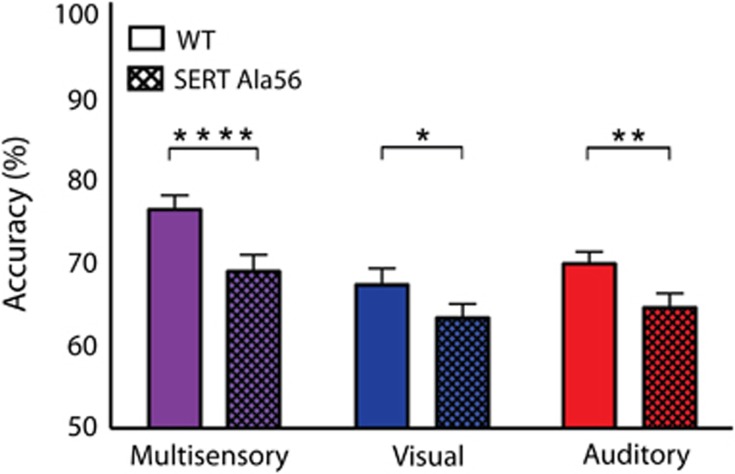Figure 3.
Behavioral accuracies for multisensory, visual and auditory conditions collapsed across stimulus durations. Overall accuracies for these collapsed conditions for wild-type animals were as follows: multisensory—76.4±1.71%, visual—67.3±1.98% and auditory 69.8±1.45%. Accuracies for SERT Ala56 animals were as follows: multisensory—68.9±1.99%, visual—63.3±1.68% and auditory 64.5±1.72%. Significant main effects of genotype (P=0.0013; F(1, 39=11.99)) and sensory modality (P<0.0001; F(2, 78=51.12)) were observed. Also, significant differences between wild-type and SERT Ala56 animals under multisensory (P<0.0001), visual (P=0.0215) and auditory conditions (P=0.0014) were observed. Behavioral performance was then evaluated within each genotype. For wild-type animals, significant differences between multisensory and visual conditions (P<0.0001), multisensory and auditory conditions (P<0.0001) and no significant differences between visual and auditory conditions (P=0.2000) were found. Similarly for SERT Ala56 mice, significant differences between the multisensory and visual conditions (P=0.0007), multisensory and auditory conditions (P=0.0093) and no significant differences between visual and auditory conditions (P=0.6816) were observed. The significant levels are as follows: (*P<0.05, **P<0.01, ****P<0.0001). SERT, serotonin transporter; WT, wild-type.

